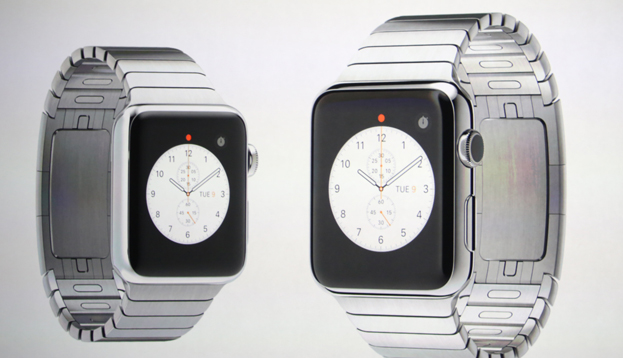With the introduction of the Apple Watch, we expect wearables to grow exponentially as an electronics category. No matter how innovative Google Glass was when it was introduced, it, lacked, well, something.
Apple has the opportunity to change the perception of the whole category with Apple Watch. As usual when it comes to Apple products it’s the seamless integration of hardware and software as well as its compatibility with other Apple devices which makes it more than the sum of its parts.

Ad dollars are already flowing to mobile advertising and the possibility of creating native advertising for the Apple Watch is certainly something that excites me. The most common use-case scenario being painted is the following: You walk down the street to meet a friend and as you walk by Starbucks and check the time, you are served a coupon for two-for-one on lattes on your Apple Watch. You go into the store and pick up a latte for you and one for your friend, using your mobile wallet to pay and then post to Facebook about what a great deal you just got.
However, there is so much more you can do. If you think about the opportunity around fitness and health apps. Take note of what Apple says about this device. They call it “their most personal yet” points to features such as “Digital Touch” including a built-in heart rate sensor as well as GPS and Wi-Fi from your iPhone to provide a comprehensive picture of your daily activity. Also other more practical applications such as boarding a plane with a Passbook boarding pass, control your Apple TV or get directions while riding a bike or driving a car.
The challenge for us marketers and advertisers is to figure out how we can seamlessly integrate marketing messages in these use-case scenarios that do not interrupt what the user is doing but enhances it, as in the coffee-coupon offer I described earlier.
Apple has introduced the WatchKit, providing new tools and APIs for developers to create unique experiences designed for the wrist. I can’t wait to see how this interface and an even smaller screen than on the cell phone will affect the way that we communicate and create.
Messages are going to be even shorter, using subtle graphics and taptic motion, yet need to be instantly recognizable and leave a lasting impact.
Welcome to the future, marketers. Let’s continue to innovate!

